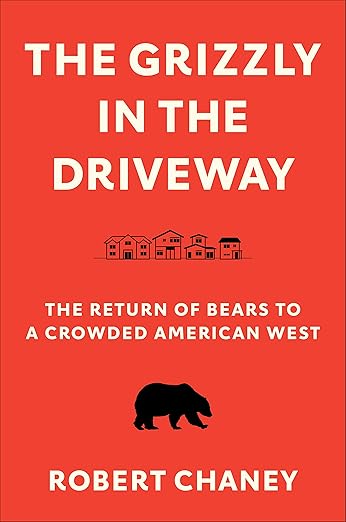
As author and Montana-based reporter Robert Chaney contends, “Grizzly bears inspire fear in some, reverence in others, and fascination in all.” In his latest work, Chaney confronts the unintended consequences of the successful recovery of this magnificent creature.
Just four decades ago, estimates indicated that only six hundred grizzly bears remained in Montana, Wyoming, and Idaho, out of the presumed fifty thousand that Lewis and Clark “fought their way past” in 1805. As Chaney notes, “[t]he only predatory animal to receive more mentions in Lewis and Clark’s journals than the grizzly bear was the mosquito.” Further, “Before the War of 1812, North American grizzlies dominated the food pyramid from the one-hundredth meridian west of North Dakota to the California coast and deep into Mexico.” However, “By World War I, only the mountain ranges surrounding Glacier and Yellowstone National Parks sheltered the last breeding populations in the Lower 48 states.” A result primarily due to Americans deliberately removing the grizzly bear from landscapes for which they felt they had better use.
Since receiving federal protection under the Endangered Species Act of 1973, the grizzly population in those three states has quadrupled. According to the author, thousands of others inhabit the region stretching from his hometown of Missoula, Montana to Glacier National Park, and tens of thousands more “inhabit northwestern Canada and Alaska, as well as other landscapes around the planet.” This burgeoning number of grizzlies has begun to collide with the increasingly populated landscape of the twenty-first-century American West, and responses to their success story vary, which Chaney explores.
While humans and bears have long shared space, today’s grizzlies are forced to navigate a shrinking amount of wilderness. Ranchers are losing livestock, and parents fear letting their children play in their backyards without supervision. At the same time, “the presence of grizzlies draws many other people to the same landscape in hopes of experiencing some dream of authentic Nature.” Additionally, to the indigenous tribes of the American West, grizzly bears are of a “tremendous cultural, spiritual, and ecological significance,” similar to the significance of the bald eagle as a national symbol for the United States.
Considering all these factors, the challenge now is what to do and where to start. According to the author, humans can begin by rethinking their acceptance of risk and tolerance for inconvenience. “This might require envisioning the management of landscapes less for short-term gain, and for more than just human benefit,” as both the grizzlies’ lives and ours depend on it.
A well-written and thought-provoking analysis of this pressing issue.
Review Publication: Literary West Review